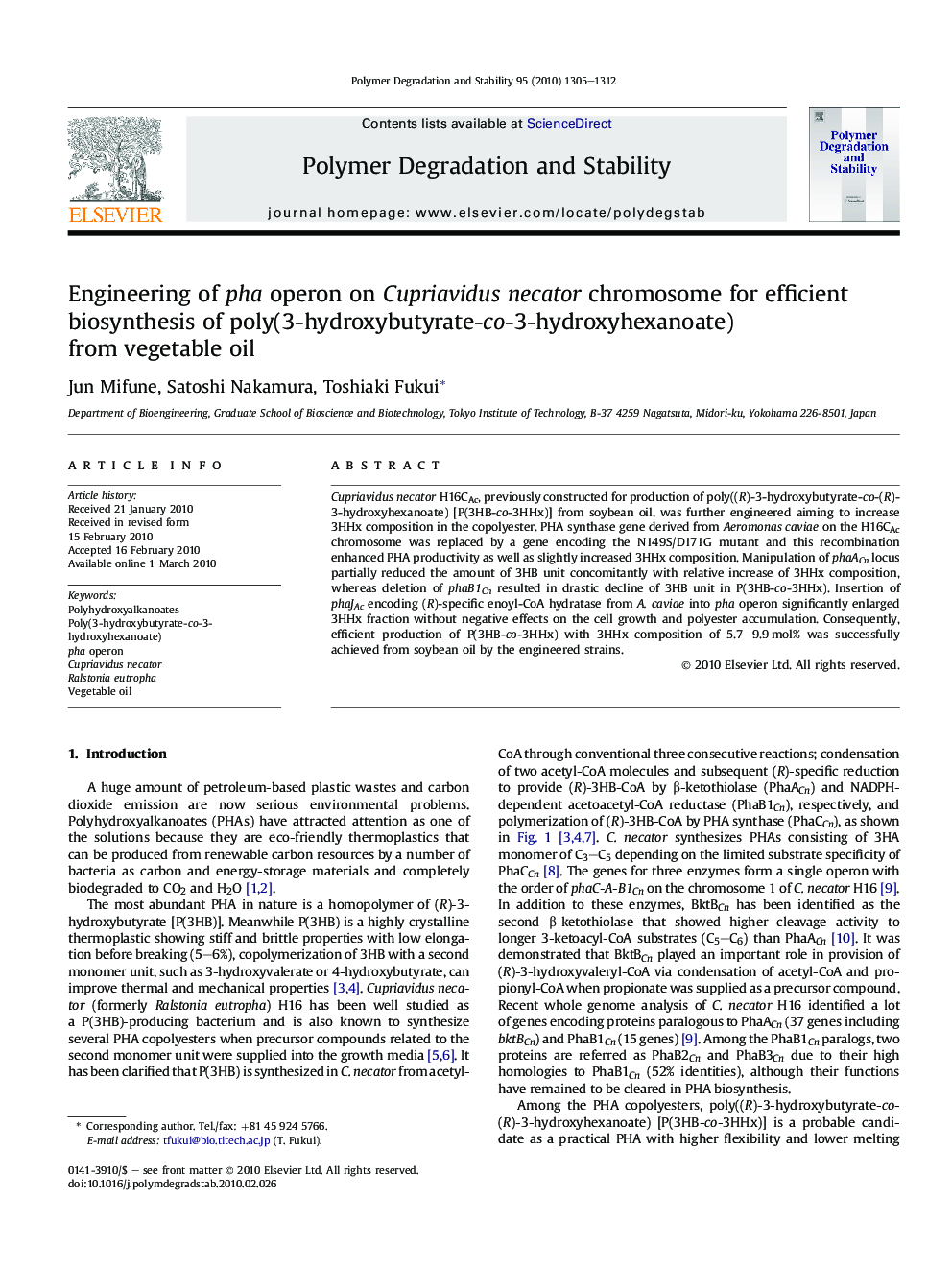| Article ID | Journal | Published Year | Pages | File Type |
|---|---|---|---|---|
| 5203372 | Polymer Degradation and Stability | 2010 | 8 Pages |
Abstract
Cupriavidus necator H16CAc, previously constructed for production of poly((R)-3-hydroxybutyrate-co-(R)-3-hydroxyhexanoate) [P(3HB-co-3HHx)] from soybean oil, was further engineered aiming to increase 3HHx composition in the copolyester. PHA synthase gene derived from Aeromonas caviae on the H16CAc chromosome was replaced by a gene encoding the N149S/D171G mutant and this recombination enhanced PHA productivity as well as slightly increased 3HHx composition. Manipulation of phaACn locus partially reduced the amount of 3HB unit concomitantly with relative increase of 3HHx composition, whereas deletion of phaB1Cn resulted in drastic decline of 3HB unit in P(3HB-co-3HHx). Insertion of phaJAc encoding (R)-specific enoyl-CoA hydratase from A. caviae into pha operon significantly enlarged 3HHx fraction without negative effects on the cell growth and polyester accumulation. Consequently, efficient production of P(3HB-co-3HHx) with 3HHx composition of 5.7-9.9Â mol% was successfully achieved from soybean oil by the engineered strains.
Keywords
Related Topics
Physical Sciences and Engineering
Chemistry
Organic Chemistry
Authors
Jun Mifune, Satoshi Nakamura, Toshiaki Fukui,
